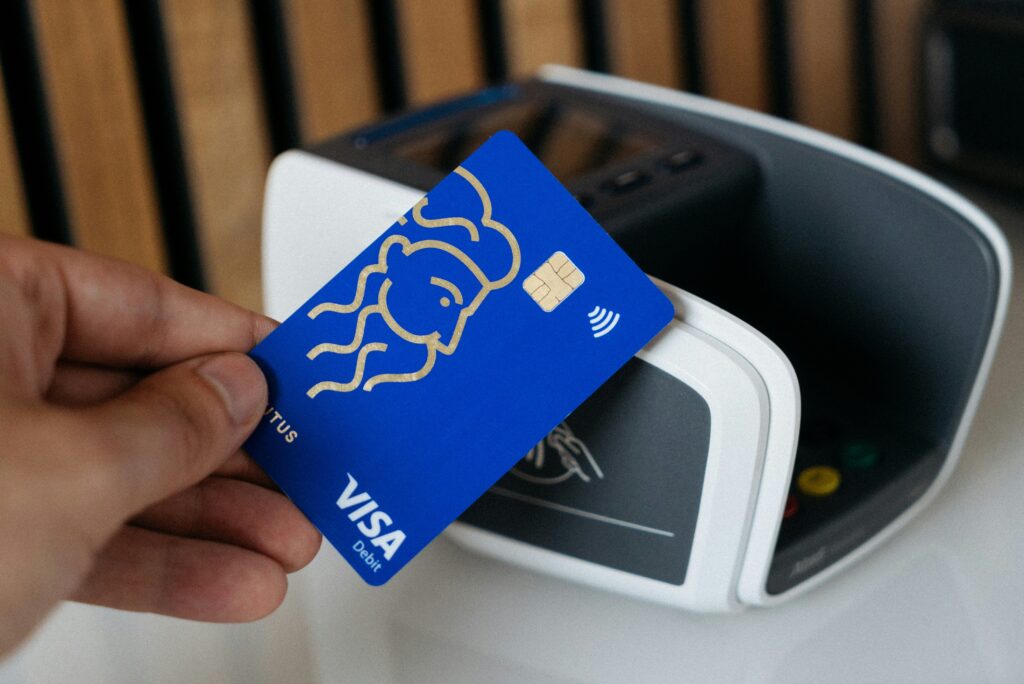Short summary: This practical, step-by-step guide walks you through the main U.S. immigration pathways, how to pick the right process (so you don’t end up in the wrong line), the documentation and timeline you should expect, and how to prepare and ace the interview — whether it’s at a consulate abroad or at a USCIS office inside the United States.
Table of Contents
- Why this guide exists (and who it’s for)
- Quick overview: Common U.S. immigration pathways
- The two big routes: Adjustment of Status vs. Consular Processing — pick the right line
- Step-by-step timeline (what happens and when)
- Paperwork essentials: the checklist you’ll actually use
- Medical, biometrics, and background checks (don’t skip these)
- The interview: mindset, logistics, and presentation
- Sample interview questions and strong answer frameworks
- Common mistakes that lead to delays or denials
- What to do if your case is denied — appeals, motions, and waivers
- Avoiding scams and low-quality legal help
- Day-of-interview checklist & quick cheat sheet
- Final tips and next steps
1) Why this guide exists (and who it’s for)
U.S. immigration is a process layered with forms, deadlines, medical checks, interviews, and — if you pick the wrong route — unnecessary delays. This guide is for applicants, petitioners, and families who want a clear, practical playbook: pick the correct process, collect the right documents, and walk into your interview confident and prepared.
Whether you’re applying through a U.S. citizen family member, an employer, the Diversity Visa program, marriage, a fiancé, or another pathway — this guide is designed to reduce stress and help you avoid the most common traps.
2) Quick overview: Common U.S. immigration pathways
Here are the most common ways people move toward lawful permanent residency (a “Green Card”) or a U.S. visa:
- Family-based petitions (spouse, parent, child, sibling) — often initiated by a U.S. citizen or lawful permanent resident.
- Employment-based petitions — sponsored by an employer (or self-petition in some categories like EB-1 extraordinary ability).
- Fiancé(e) (K-1) petitions — for those planning to marry a U.S. citizen within 90 days of entry.
- Diversity Visa (DV) lottery — limited, random allocation each year to certain countries.
- Refugee or asylum-based claims — for people who fear persecution.
- Student to work paths — temporary student visas (F-1) can sometimes lead to employer sponsorship (H-1B and then green card).
Each pathway has its own documentation, rules, and timeline. The most important early decision is whether you will adjust status inside the United States or complete consular processing abroad — and that’s what we’ll explain next.
3) The two big routes: Adjustment of Status vs. Consular Processing — pick the right line
Think of immigration as a railway station with two platforms:
- Platform A — Adjustment of Status (AOS): You are already in the U.S. on a lawful status that allows you to apply for permanent residency without leaving the country. You file the application with USCIS (commonly Form I-485) and wait for adjudication stateside.
- Platform B — Consular Processing: You’re outside the U.S., or ineligible to adjust status, so your petition proceeds through the National Visa Center (NVC) and the U.S. embassy/consulate in your home country. You attend a visa interview there; once approved, you travel to the U.S. and receive your immigrant visa and, later, your Green Card.
Which platform is right for you?
- If you are physically in the U.S. and your immigration category allows AOS, AOS generally avoids the additional step of leaving and re-entering the U.S. — but it comes with its own set of forms, biometrics, and timelines.
- If you are outside the United States, or your current status doesn’t permit AOS, consular processing is the normal route.
Key reason to choose wisely: Choosing the wrong route can mean extra fees, travel, or even denial for procedural reasons. For example, some visas or petitions require you to complete processing at a U.S. consulate abroad. Others allow AOS and benefit from concurrent filing. Learn your eligibility early.
4) Step-by-step timeline (what happens and when)
Timelines vary by category and country, but a typical family- or employment-based immigrant case follows these phases:
- Petition Filed: A family member or employer files the immigrant petition (e.g., Form I-130 for family-based or Form I-140 for many employment-based cases).
- Petition Adjudication: USCIS approves or denies the petition. Processing time varies by service center and priority category.
- Visa Availability / Priority Date: For numerically limited categories, a priority date must be current before you can move forward. Check the monthly Visa Bulletin if your category is backlogged.
- NVC Processing (if consular): The National Visa Center collects fees and civil documents, then sends the case to the embassy for interview scheduling.
- Adjustment of Status (if AOS): File Form I-485 (and supporting docs). You’ll receive biometric appointment, then possibly an interview notice.
- Medical Exam: A panel physician or civil surgeon conducts the medical exam and completes the I-693 (or provides a sealed envelope for consulate).
- Biometrics and Background Checks: Fingerprints and background checks occur for nearly all applicants.
- Interview: USCIS or a consular officer interviews you. Decision may be immediate, or issued after further review.
- Approval, Travel, and Green Card Issuance: If the consulate approves, you receive an immigrant visa to travel. If AOS is approved, USCIS mails your Green Card.
Timeframes
- Simple family-based AOS: months to over a year.
- Employment-based with priority date current: months, though PERM labor certification and I-140 can add months/years.
- Diversity visas: fixed annual cycle.
Always check official processing times and the Visa Bulletin that applies to your category.
5) Paperwork essentials: the checklist you’ll actually use
Below is a practical checklist you can print and tick off — tailored for green-card applicants. Adapt items to your particular pathway.
Identity & civil documents
- Valid passport(s) for principal applicant and accompanying family
- Birth certificate(s) (with certified English translation if not in English)
- Marriage certificate(s) / divorce decree(s) / death certificate(s) of former spouses
- Police certificates and court records for applicants 16+ in some consular processes
Immigration forms (examples — depend on pathway)
- Petition forms: Form I-130 (family), Form I-140 (employment), Form I-129F (fiancé), etc.
- Adjustment: Form I-485 (if filing inside the U.S.)
- Consular applicants: DS-260 (immigrant visa application)
- Nonimmigrant applicants: DS-160 (nonimmigrant visa application)
Supporting evidence
- Proof of relationship: photos, joint bank accounts, lease, communication logs (for family or marriage-based cases)
- Financial evidence and Affidavit of Support (Form I-864) showing petitioner’s ability to sponsor
- Employment letters, pay stubs, tax returns (for employment-based and some family cases)
Medical & background checks
- Medical exam form completed by an authorized physician (Panel Physician for consular cases; civil surgeon for AOS)
- Vaccination records
- Fingerprint/biometric notices (appear as scheduled)
If criminal history exists
- Certified court records, disposition documents, and translations. Don’t hide arrests or convictions.
Practical copies
- Photocopy every key document twice. Keep an organized binder and a scanned backup.
6) Medical, biometrics, and background checks (don’t skip these)
A medical exam and biometrics (fingerprints) are non-negotiable checkpoints in most immigrant cases.
Medical exam tips
- For consular processing: see instructions from the embassy — often the Panel Physician will submit results directly or give you a sealed envelope. Do not open.
- For AOS inside the U.S.: you generally need Form I-693 completed by an authorized civil surgeon. Follow the latest USCIS guidance on when to submit the I-693 with your I-485 to avoid delays.
- Bring vaccination records and any medical history documents to the appointment.
Biometrics & background checks
- Expect to receive a biometrics appointment notice for fingerprinting. Attend on time; refusal or no-show can pause or deny processing.
- Fingerprints are used for security checks, which can reveal issues that may require explanation or waivers.
7) The interview: mindset, logistics, and presentation
View the interview as a professional conversation, not an interrogation. The officer’s job is procedural: confirm identity, verify eligibility, and check for fraud.
Mindset
- Be clear, calm, and honest. Short, accurate answers are better than long-winded stories.
- Speak in the language requested. If you use an interpreter, bring a certified translator if required.
Logistics
- Arrive early. Bring the appointment letter, passport, original documents, and extra copies.
- Follow security rules at the embassy or USCIS office (phones may be restricted; check the pre-interview instructions).
Presentation
- Dress neatly. You don’t need a suit, but looking presentable signals seriousness.
- Bring supporting documents that prove your relationship, employment, or eligibility.
Behavior during the interview
- Answer only what is asked. If you didn’t understand a question, say so — don’t fake it.
- If you need to correct the officer, do so politely and briefly.
8) Sample interview questions and strong answer frameworks
Below are common questions by category and example frameworks for strong answers. Use your own facts — authenticity matters.
Family-based / Marriage-based
Q: How did you meet your spouse?
- Framework: When + Where + What you did together + Example that proves the relationship is real.
- Example short answer: “We met in 2016 at a mutual friend’s wedding in Karachi. After that we stayed in touch, visited each other several times, and married in 2019. We have joint bank accounts and a lease in both names.”
Q: Describe a normal day in your household.
- Framework: Morning routine + work/school + evening routine + shared responsibilities.
Employment-based
Q: What will you do in the U.S.?
- Framework: Job title + employer name + a two-line explanation of duties + why your background fits.
Q: Do you plan to work for a different employer?
- Be honest. If your green card is employer-specific and you intend to change, understand the rules — some categories allow portability after a certain stage.
Student-to-Work / Nonimmigrant to Immigrant
Q: Why are you adjusting status now?
- Framework: Brief explanation linking your job offer/path to permanent residency + concrete timeline.
General questions every applicant should expect
- Have you ever been arrested or convicted? (Answer truthfully.)
- Have you traveled outside your home country since filing? (Tell the truth.)
- Have you ever used a different name or had different documents? (Disclose and explain.)
If you don’t know an answer — say so and offer to check. Never make up facts.
9) Common mistakes that lead to delays or denials
- Submitting incomplete forms or missing the requested supporting evidence. Always follow the form instructions and upload/attach all required documents.
- Wrong process (AOS vs consular) chosen after filing. This can lead to re-filing or delays.
- Missing the medical exam or submitting an outdated I-693. Follow the guidance on timing.
- Misrepresentations or omissions. Never lie — mistakes can create grounds for inadmissibility.
- Not checking priority dates for backlogged categories. For some employment or family categories, the visa number must be available.
- Ignoring requests for evidence (RFEs) or failing to attend biometrics or interviews. Respond promptly.
10) What to do if your case is denied — appeals, motions, and waivers
If you receive an unfavorable decision, stay calm and act fast.
Typical options
- Motion to reopen or reconsider: If new facts or legal errors exist, a motion such as Form I-290B may be filed in certain cases.
- Appeal: Some denials can be appealed to an administrative appeals office or the Board of Immigration Appeals.
- Waivers: For grounds of inadmissibility (medical, criminal, immigration violations), certain waivers may be available but require strong evidence and often a showing of hardship.
Immediate steps
- Carefully read the denial notice — it usually states whether appeal or motion is permitted and gives filing deadlines.
- Consult a competent immigration attorney who has experience with appeals and waivers.
- Keep all current filings current (respond to RFEs, don’t miss deadlines).
11) Avoiding scams and low-quality legal help
Immigration is a target for fraud. Guard against this.
Red flags
- Promises that a green card is guaranteed.
- Requests to sign blank documents or to pay in cash to avoid records.
- “Notarios” or unlicensed consultants who pretend to be lawyers.
What to do instead
- Use the official USCIS, State Department, or embassy websites for forms and instructions.
- If hiring help, choose a licensed immigration attorney or a recognized nonprofit accredited by the appropriate authorities.
- Keep copies of everything and never surrender original passports unless requested by the consulate in a formal process.
12) Day-of-interview checklist & quick cheat sheet
Documents to bring (put in a single folder):
- Appointment letter and confirmation pages (I-485 interview notice or consulate appointment)
- Passport(s) and copies
- Original civil documents and translated copies
- Medical exam sealed envelope (if issued) or proof of Panel Physician appointment
- Proof of relationship or employment (photos, contracts, bank statements)
- Any prior immigration documents (old visas, I-94s, work authorizations)
On arrival:
- Turn phones to silent and follow security instructions.
- Be polite, concise, and direct.
- If asked for extra documents you don’t have, ask if you can submit them later — many officers will issue a follow-up request rather than an immediate denial.
13) Final tips and next steps
- Start organized. Make a physical binder and a cloud backup.
- Make timelines visible. Monitor petition processing times and the Visa Bulletin.
- Don’t hide problems. Early disclosure of arrests, misstatements, or prior removals allows you to build a mitigation strategy.
- Practice the interview aloud. Short, truthful, consistent answers win. Consider mock interviews with a friend or attorney.
- Get professional help for complex matters. Criminal history, long unlawful presence, or complicated employment scenarios deserve an experienced immigration lawyer.
Frequently Asked Questions (Short answers)
Q: Should I hire an immigration lawyer?
A: For straightforward cases you may proceed on your own, but if you have criminal history, immigration violations, or complex employment sponsorship, hiring a lawyer greatly improves outcomes.
Q: Can I travel while my AOS is pending?
A: Travel during pending AOS often requires advance parole or a valid travel document. Travel rules depend on exact status; check instructions before leaving.
Q: How long does the interview last?
A: Many interviews take 10–30 minutes of questioning, though waiting times and administrative processing can add hours.
Q: Can I bring family to the interview?
A: Usually immediate family members who are listed on the application attend. Check the embassy or USCIS instructions for dependents.
Closing: Keep control of the process
U.S. immigration is manageable when you break it into parts: pick the correct route, collect and organize accurate documents, complete medical and biometrics on time, and treat the interview as a focused conversation to confirm facts. Avoid shortcuts, keep copies, and use reliable official sources or a licensed attorney when in doubt.
If you’d like, I can now:
- Convert this article into WordPress-ready HTML with headings, images placeholders, and an SEO meta description.
- Produce a shorter 600–800 word version for social sharing.
- Create a checklist PDF you can print and hand to clients or family members.
Tell me which of those (if any) you’d like me to produce next — or I can export this as a single-file HTML ready to paste into WordPress.
Written to be practical, up-to-date, and friendly. Adapt to local embassy instructions and official USCIS/State Department guidance for details specific to your country or category.




